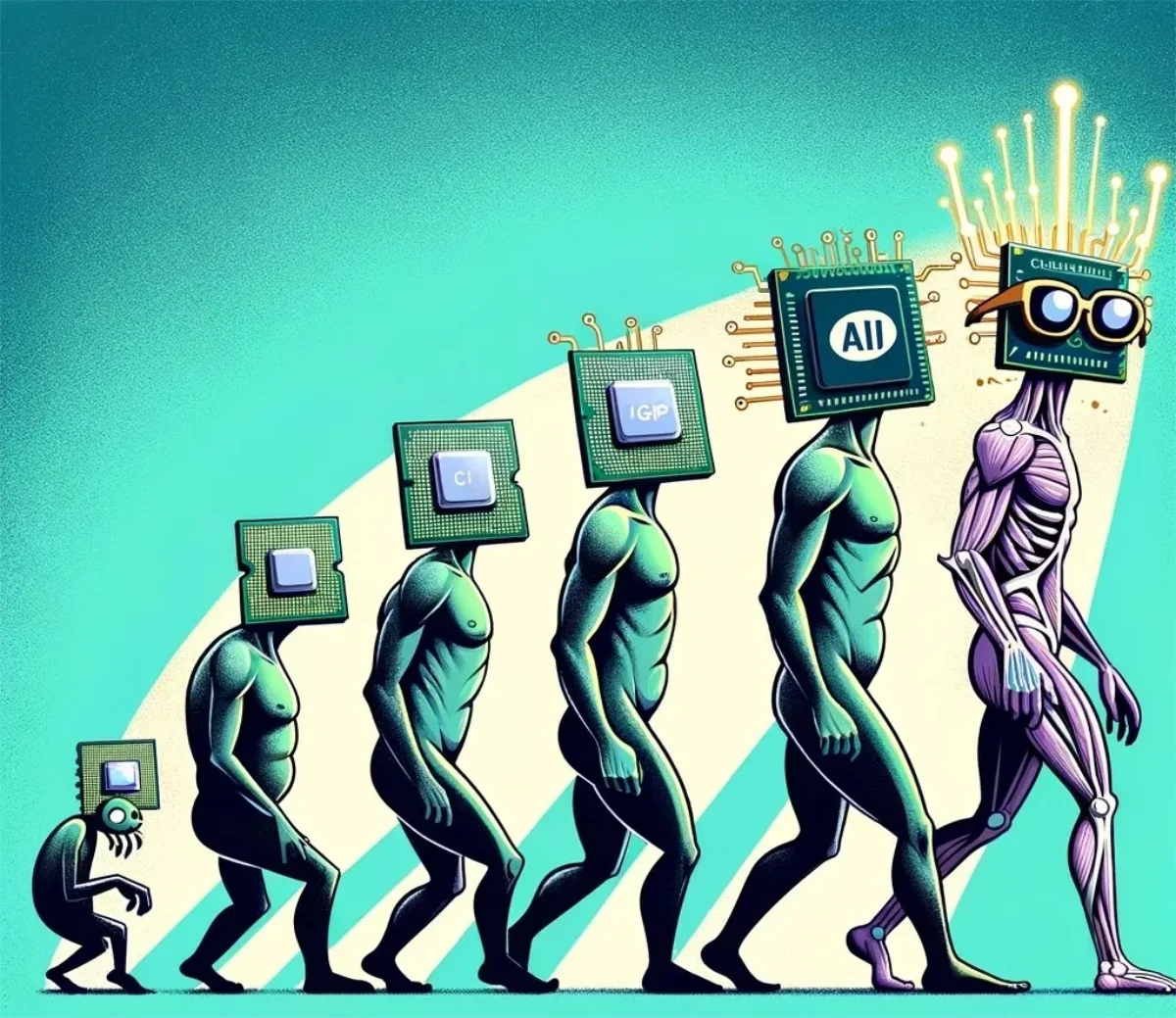From Brute Force to Visual Processing: Is Intel Losing the Battle? What This Shift Means for Intel
November 6, 2024•948 words

Are Computers Learning to “See” Like Us
Technology has been on an exciting journey, and lately, we’re seeing a shift that feels almost… human. Just as our brains are wired to prioritize visual information, computers are doing the same—focusing more on specialized visual processing and less on sheer CPU horsepower. Nvidia’s potential new CPU, reportedly aimed at competing with Intel and AMD, is a sign of this shift. But what does this mean, and why does it feel so different from the CPU wars we grew up with?
A Walk Down CPU Memory Lane
Growing up, I remember when Intel was the king, and AMD was the scrappy underdog. My first computer ran on an Intel 8086, followed by the 80286, the 386, and eventually AMD’s K2 and Athlon chips. Those were the days of the “core wars”—when every new release meant more power and a fresh wave of excitement. Intel was the standard, and AMD was the choice for those wanting more affordable options. I was one of them, scraping together savings for an AMD processor and pairing it with a GeForce-based motherboard chipset because an Intel setup was out of reach. Adding an ATI Radeon TV Combo card later felt like the ultimate flex.
Growing up in Pakistan, getting Intel gear was almost impossible, but that was part of the thrill of building a rig on a budget. My friend and I even made and sold computers in our teens. We used to walk from near Karachi University in Gulshan-e-Iqbal, all the way to Hassan Square and Civic Center, and over to Gulshan Chowrangi, hitting all the computer stores on our way to find the best parts. Shops lined both sides of the street for miles—some selling computers, others a patchwork of electronics. I’m not sure if that scene’s still the same now, but it was a great time to be a tech kid.
Fast forward to today, and the idea that Intel might fall behind or fade out is almost surreal. Intel has always felt like a pillar of computing, and seeing it struggle feels like watching a piece of history fade.
The “Awkward Position” That Could Break Intel
Here’s the tough spot Intel finds itself in: they’re under intense pressure to keep supporting x86 (and x86-64) architecture because so many companies rely on it. Intel’s partners and vendors need x86 to remain stable to support the infrastructure they’ve built over decades. So while AMD, Nvidia, and other chip companies are free to experiment and shift to new architectures, Intel has to keep one foot planted firmly in x86, limiting its flexibility.
It’s a bit unfair, honestly. This rigid expectation has held back giants before—just look at IBM, Dell, HP, and even BlackBerry. All faced similar challenges because they were tied to legacy systems and couldn’t pivot fast enough.
Intel’s biggest challenge isn’t just the competition; it’s the role everyone wants it to play. Legacy dependency forces Intel to hold back from adapting to the industry changes that its competitors have readily embraced. This expectation to keep everything x86-compatible puts a huge damper on Intel’s ability to innovate and pivot.
Two Paths Forward: Rethink or Reinvent
If Intel wants to stay in the game, it has a few options. One approach could be setting up an external team, free from the usual bureaucracy, with the freedom to innovate. Cisco has done something similar: creating agile teams with the funding and autonomy to pursue big projects without red tape. Intel could benefit from this approach, giving a team the resources and freedom to pursue projects that have been stifled in the pipeline for years.
Another option? Intel could acquire a promising chip startup—or even consider a merger with a company like Nvidia. Imagine if Intel and Nvidia joined forces. They’d create a powerhouse that could compete with AMD while pushing the innovation edge. It might even give AMD back some of that underdog spirit, which tends to fuel even more creativity. Historically, AMD has thrived on rivalry.
The Future of Computing: Seeing More, Thinking Less
As tech continues shifting from raw CPU power to smarter, task-focused processing, it’s easy to see why Nvidia’s new CPU venture has everyone’s attention. By designing chips that work efficiently for specific tasks—like visual data processing—companies like Nvidia are redefining what “power” means in a computer. Just as our brains rely on visual processing to make sense of the world, modern processors could become more specialized, reducing the need for traditional brute CPU force.
For end users, this shift could mean faster, more efficient devices for gaming, video, AI, and beyond—all without the constant need to upgrade CPUs. Developers could tap into these specialized processors to create applications that are leaner, faster, and more tailored for the tasks at hand.
Conclusion: A New Chapter in Computing
Intel’s story has been tied to x86 and x86-64 architecture for decades, and now that legacy could be holding it back from riding the next computing wave. Nvidia’s CPU development represents a fresh approach, potentially redefining the industry much as Intel did in its early days. Just as our brains balance complex tasks by focusing on what matters most, our computers are beginning to do the same, leaning on specialized processing power.
Maybe, just maybe, this new competition will drive the next era of innovation—and with a bit of luck, we’ll see all the big players, Intel included, embracing new ideas and reinventing themselves.
I’m looking forward to hearing other takes on this topic in the coming days.